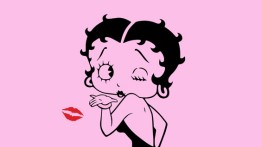COOPERMADE: Betty Boop

A controversial figure from the start, the coquettish Betty Boop was the creation of Max Fleischer (1883-1972), a member of the Cooper class of 1900. Betty Boop first came on the scene in 1930 as part of Fleischer’s Talkartoon cartoons. Improbably, she began her career as a talking dog, but eventually morphed into a flapper looking much like the film actresses Clara Bow and Helen Kane. In fact, Kane sued Fleischer and company for copying her image and sound, but the court ruled in Fleischer (and Boop’s) favor. Her curvy figure and coy tagline (“boop-oop-a-doo!”) brought Fleisher and his studio under fire under the new Hays Code, which was designed to police conduct portrayed on screen. Betty Boop became less flirtatious, lost her hoop earrings, and donned less-revealing dresses. But none of it diminished her popularity, or the popularity of her fellow Fleischer Studio character. Though not a Fleischer creation, the sailor got a critical upgrade from the Cooper alum - it was Fleischer who decided that copious amounts of spinach would fuel Popeye’s muscle-bound power.





